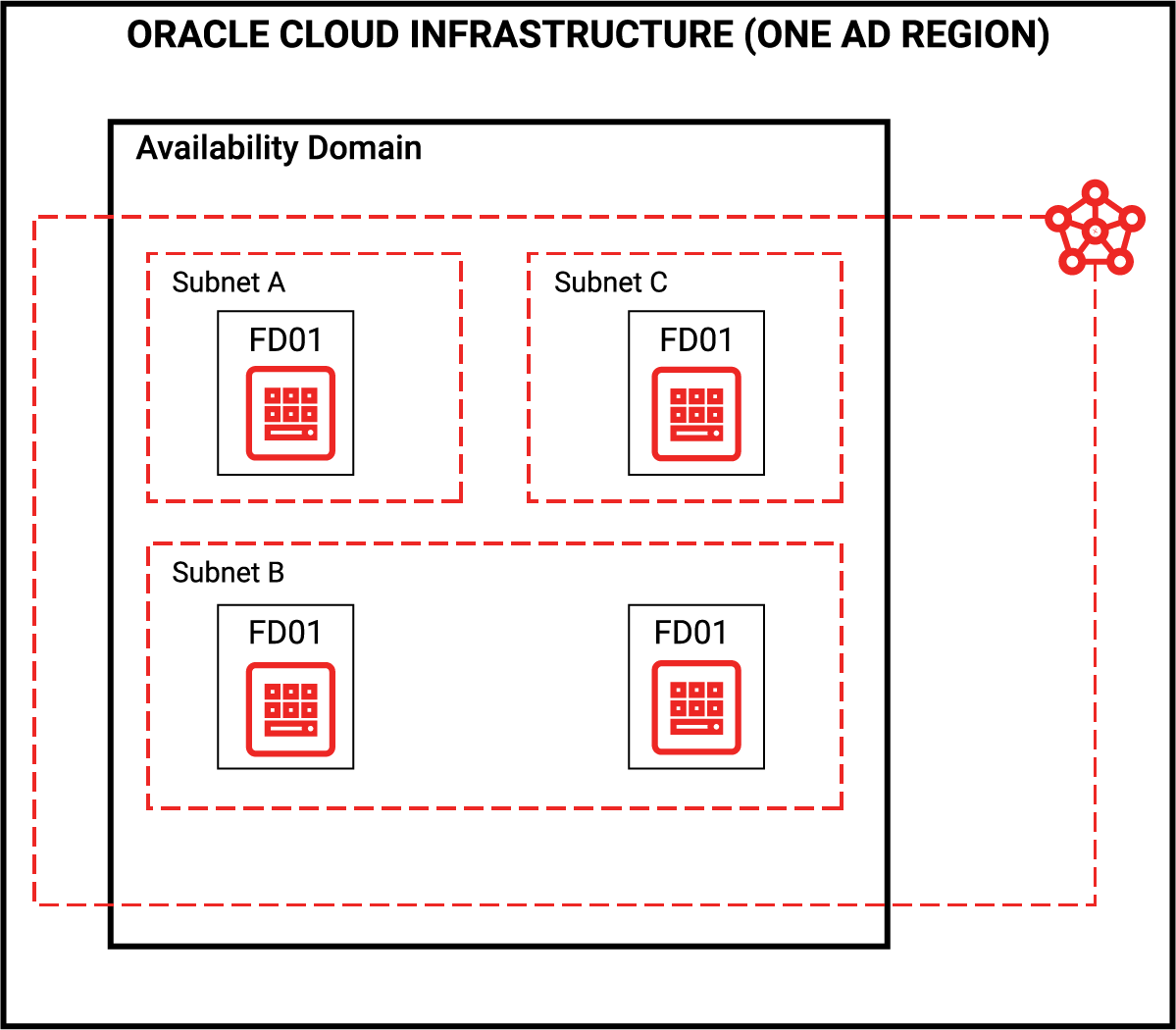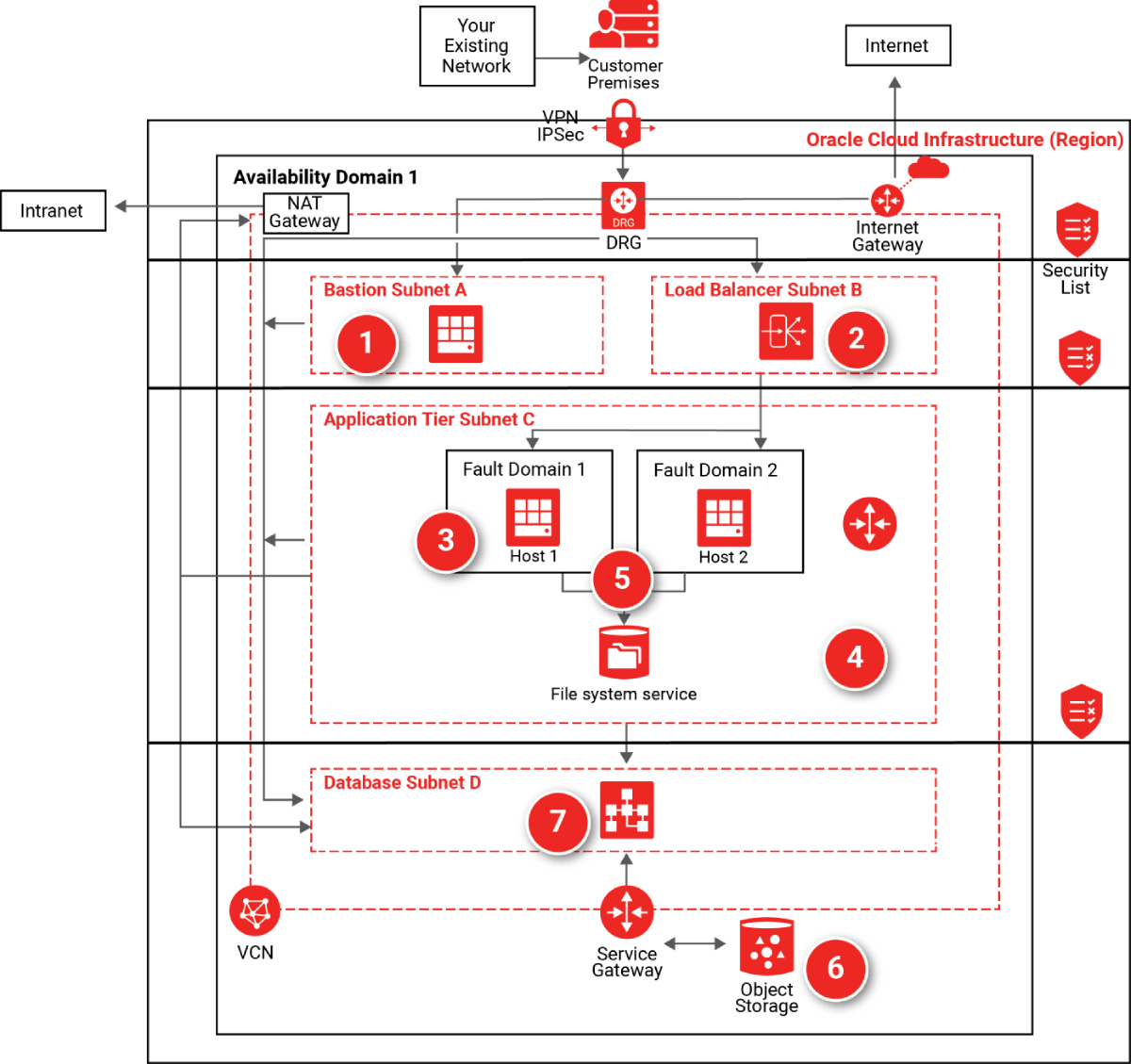Key considerations
- Identify the right level of availability for your business objectives
- Avoiding single points of failure
- Multiple active-active nodes at each application tier
- System resilience
- Backup strategy for non-database tiers
- Redundancy strategy for database tier
- Backup requirements for database tier
The primary objective for this architecture is to build resiliency, redundancy and high availability (HA) into the cloud infrastructure that is supporting E-Business Suite and its backend datasets.
Avoiding single points of failure – In a single availability domain on cloud
- One of the essential principles of designing high availability solutions is to avoid single points of failure.
- OCI recommends designing your architecture to deploy instances that perform the same tasks in different fault domains for one AD regions and, when possible, in different availability domains for multiple AD regions.
- This cloud design removes a single point of failure by introducing redundancy.

Resiliency & High Availability Reference Architecture (Achievable in Single Availability Domain)

Bastion host (1): The bastion host is an optional component that you can use as a jump server to access the instances in the private subnet on OCI cloud.
Load balancer tier (2): We recommend having load balancers in their own tier or subnet to load balance traffic to EBS web servers. The load balancer receives requests from users and routes them to the application tier.
System resilience (3): Fault domains is a grouping of hardware and infrastructure that is distinct from other fault domains in the same Availability Domain (AD). Each AD has three fault domains. By properly leveraging fault domains you can increase the availability of applications running on Oracle Cloud Infrastructure.
Application tier (4): This tier contains more than one instance of an Oracle E-Business Suite application to provide high availability. Set up multiple instances of an application in separate fault domains to ensure that you can continue accessing the application even if an application instance goes down. Use Oracle Cloud Infrastructure File Storage to create a shared file system to share Oracle E-Business Suite application binaries.
Active-active server redundancy (5): To ensure high availability within an Availability Domain (AD), deploy redundant instances of every component making use of Fault Domains. All instances are active and they receive traffic from the load balancer and middle tier.
Backup strategy database tier(6): Use of Oracle Object Storage to perform a backup using Oracle Recovery Manager (RMAN). To back up or patch the database to Object Storage, the DB system’s VCN must be configured with either a service gateway or an internet gateway. It is recommended that you use a service gateway rather than an internet gateway for backup and patching.
Database redundancy (7): For performance and HA requirements, Oracle recommends that you use two-node, Oracle Real Application Clusters (Oracle RAC) database systems or an Oracle Database Exadata Cloud Service system in Oracle Cloud.
Other Key considerations for Designing an Oracle Cloud Architecture
Ensuring a successful EBS migration requires careful planning for designing the most appropriate design architecture. Below are the other considerations to learn before proceeding with your EBS to OCI cloud Migration.
















